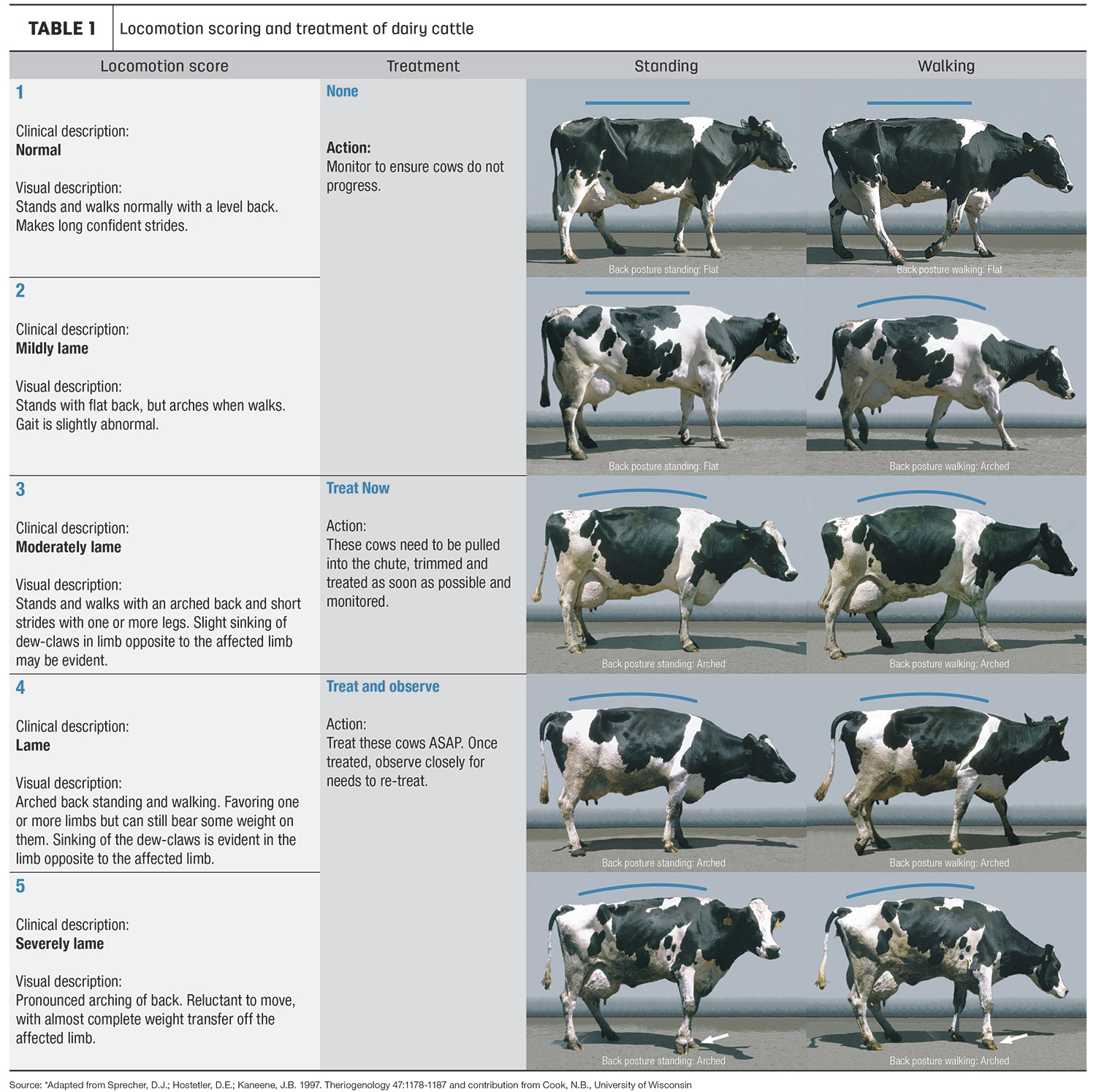We can all agree that a lame cow takes advantage of valuable time and money. When a cow becomes lame, additional internal inflammation occurs – diverting energy away from reproductive success and milk output. Lame cows are also more likely to exit the herd earlier. If a lame cow is culled early in her productive life, you may not break even or profit from that investment.
By rallying your team, these losses can be avoided. Every team needs to understand the stages of lameness to be actively on the defense to prevent hoof health concerns that often lead to lameness. Regardless of the job title held, cow well-being is everyone’s responsibility.
The burden of solving lameness cannot rest solely with employees who spend the most time with the herd, such as the herd manager, milkers and hoof trimmer. Other employees, such as the maintenance crew, calf feeder and feed truck driver, can all learn to identify a lame cow. Identifying early stages of lameness becomes second nature once learned, and severe cases can be eradicated from your operation if anyone can observe it during the day-to-day tasks taking place all over the dairy.
How many severely lame cows could you prevent if every employee knew how to spot issues?
Understanding the basics of hoof health
Hoof health can feel like a technical and overwhelming topic for some teams, but it doesn’t need to be. Understanding the basics is all that’s needed to spot a future lame cow. Lameness has multiple risk factors, and how it presents can vary from cow to cow.
First, lameness can be caused by infectious or noninfectious lesions. Infectious lesions include digital and interdigital dermatitis, heel erosion and foot rot. Wet conditions, poor foot hygiene and footbath management are the leading risk factors for infectious lesions. Noninfectious lesions include issues such as white line lesions, ulcers, corkscrew claw, fissures and thin soles. Hoof trimming issues, excessive standing time, insufficient laying time, poor facility design, feedbunk space and heat stress are all environmental issues that contribute to noninfectious lesions.
Employees do not need to know how to diagnose a hoof lesion to know the risk factors and help maintain the best environment possible for hoof health. Early identification of the cause, and prompt, effective treatment of the cow is the best way to reduce lameness in the herd. As employees learn how to spot these risk factors, our dairy claw lesion identification guide is a great resource to have on hand for continued reference.
In addition to recognizing environmental factors, the cow will also present signs that a lameness issue is on her horizon. Employees can often spot these issues from up close or far away once they know what to look for. Signs of an issue include:
- Nodding or bobbing of the head when a particular foot hits the ground
- The back or spine appears more arched while resting and moving
- Shorter stride length
- Slower walking speed
- Frequently stopping when walking
- Struggles to make sharp turns or rise in the stall
Locomotion scoring is an intuitive way to train your team
To help your team become familiar with and skilled at making these observations, locomotion scoring is a great way to improve lameness education (Figure 1). Locomotion scoring is based on visual observation of cows and ranking them 1-5: 1 – normal, 2 – mildly lame, 3 – moderately lame, 4 – lame and 5 – severely lame. This ranking system is intuitive, making it easy to learn and implement across your team. Providing a locomotion scoring and treatment guide can also be helpful as you show employees what to look for.

When teaching employees how to locomotion score, ensure the cows can be observed before milking and are standing and walking on a solid, level and nonslip surface for accurate scoring. Scoring pens of cows that are housed together is also a great way to train your team to look for shared issues and identify potential causes of lameness.
Everyone on the dairy should know how to locomotion score and identify signs of lameness, but if you want to kick your lameness prevention program up a notch, assigning a few people to regularly locomotion score can catch more issues. Those assigned to locomotion score on a frequent basis will have a better understanding of individual animal movement and can notice an impending problem much earlier. In addition to locomotion scoring, involving your team in facility and cow comfort evaluations can better train their eyes to look for environmental obstacles. I also recommend reviewing calm cattle handling practices, as calm cattle are less likely to experience injury-induced lameness and will be easier to observe when on the move.
Prevent lameness with a formal hoof health education
Training your team to prevent lameness is one of the best investments you can make for your herd. Train new employees as they enter the dairy and continue to focus on and review hoof health education with your team throughout the year. To make this easier, you can seek out industry experts to assist with the education process. A formal training process, in addition to regularly assessing cows and maintaining a hoof trimming schedule, can keep severe lameness out of your herd so you can make the most of your investment into every animal.







